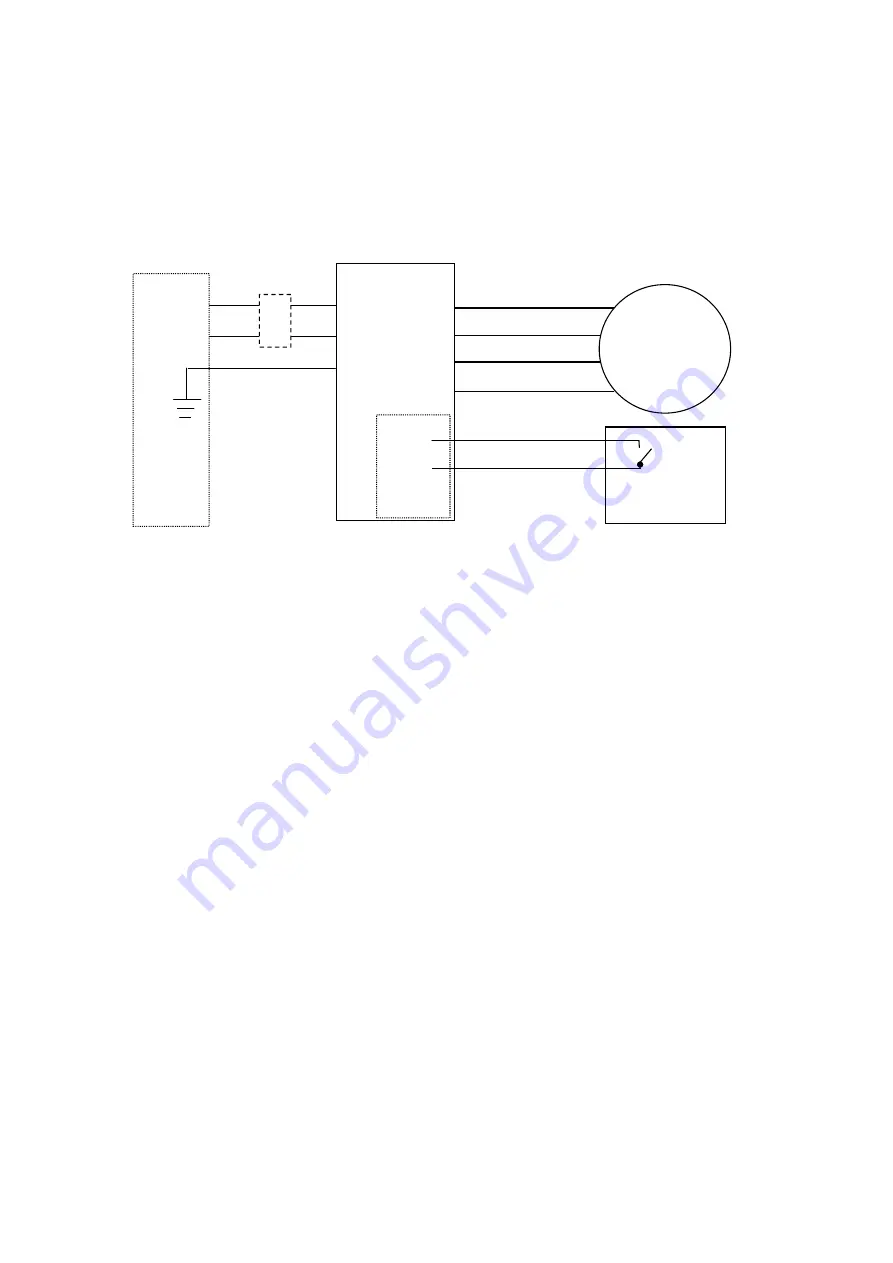
14
motor starter configuration, with the addition of an ON/OFF control switching
mechanism. The configuration used to power an individual motor with control
circuit is illustrated below:
The following points should be considered when wiring Phase Perfect
to power
a motor controlled by a remote switch such as a level or pressure switch:
1. Verify that no power is provided to Phase Perfect
.
2. Remove the front panel to gain access to the wiring terminals. See
section 2.2.1, “Wiring to Phase Perfect
Terminals,” for a drawing
illustrating the components found under the access panel.
3. Remove the factory installed jumper between the control terminal
contacts A and B. Wire the remote pressure switch, level switch, or
other control switch to control terminals A and B.
When the remote
switch is closed the overload relay will be enabled and power will
be provided to the motor or load after an approximately five to
eight second delay.
The control switch should have a minimum
rating of 240 VAC, 0.5 amp. A 3 amp fuse located just below the
printed circuit board protects the remote switch circuit.
4. Wire Phase Perfect
to the motor as illustrated above. Three-phase
output power wire connections are made to the T1, T2, and T3 output
terminals, and secured with the terminal block screws.
5. Set the motor protection unit to the desired settings:
c. Adjust the trip current to the appropriate current for the motor load
being powered. The trip rating is 120% of the dial setting.
d. Set the overload relay to auto or manual reset as desired. For auto
reset push and turn the reset button clockwise to the Auto
position. The button will remain depressed.
DANGER: In this
position the relay will reset automatically approximately two
minutes after tripping, providing power to the load without
warning.
For manual reset push and turn the reset button to the
POWER OUTLET OR
BREAKER PANEL
PHASE
PERFECT
240 VAC
0.5 AMP
C T
O E
N R
T M
R I
O N
L A
L
CLOSED
FOR ON
CONTROL SWITCH
MOTOR
T1
T2
T3
GND
A
B
C
L1
L2
GND
FUSIBLE
DISCONNECT





















